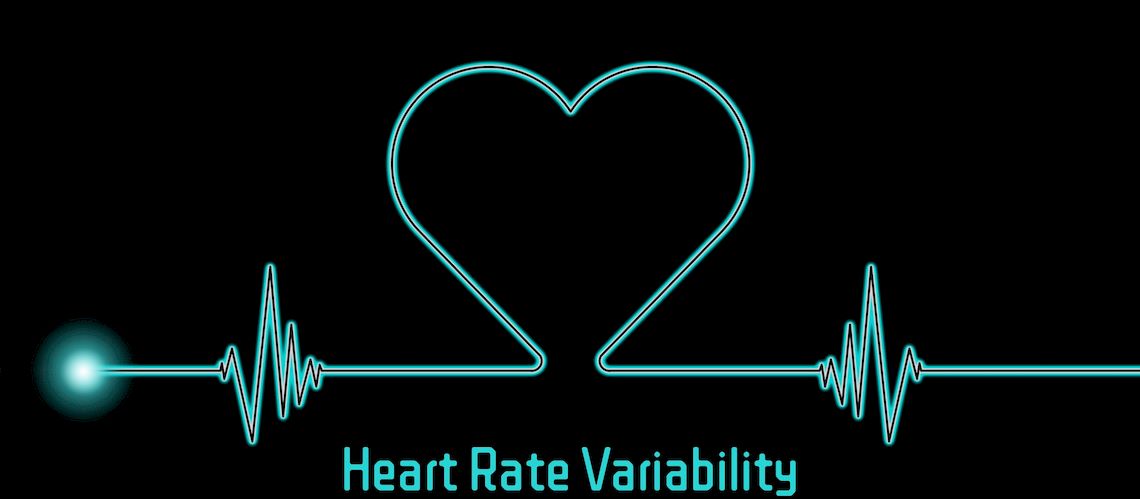In the pursuit of peak performance across various domains—physical, mental, emotional, spiritual, prosperity, and impact—Heart Rate Variability (HRV) has emerged as a key biomarker within the Excellence Nexus framework. HRV provides valuable insights into the body’s ability to regulate stress, recover from physical exertion, and maintain emotional equilibrium, all of which are essential for achieving excellence in life. HRV measures the variation in time intervals between consecutive heartbeats, reflecting the balance between the sympathetic and parasympathetic branches of the autonomic nervous system (ANS). A higher HRV is associated with enhanced physical fitness, emotional resilience, cognitive performance, and overall well-being, while lower HRV is linked to stress, anxiety, and impaired performance (Mather & Thayer, 2018; Conder & Conder, 2014).
Application in Excellence Nexus
HRV plays a critical role in supporting peak performance across the various dimensions of the Excellence Nexus framework:
- Physical Peak: HRV serves as a reliable indicator of physical recovery and cardiovascular health. Athletes and individuals striving for physical excellence use HRV to monitor their training loads, optimize recovery, and avoid overtraining, which can lead to injury or burnout (Manresa‐Rocamora et al., 2021; Tai et al., 2022).
- Mental Peak: HRV is closely related to cognitive functions such as working memory, attention, and mental resilience. Individuals with higher HRV tend to have better cognitive control, allowing for improved focus, problem-solving abilities, and decision-making (Forte et al., 2019; Passi et al., 2022). This is essential for those aiming to achieve mental excellence in academic, professional, or creative pursuits.
- Emotional Peak: The Neurovisceral Integration Model highlights how HRV reflects the efficiency of the brain’s emotional regulation systems, particularly the prefrontal cortex. A high HRV enables individuals to manage their emotional responses more effectively, leading to greater emotional stability and resilience (Mather & Thayer, 2018). This emotional control is crucial for those pursuing excellence in high-pressure environments.
- Spiritual Peak: Practices that enhance HRV, such as meditation and controlled breathing, are closely linked to spiritual well-being. These practices activate the parasympathetic nervous system, promoting relaxation and a sense of spiritual alignment, which is fundamental for those seeking to reach their spiritual peak (Prinsloo et al., 2013; Park et al., 2020).
- Prosperity Peak: HRV’s role in stress management extends to financial and professional success. Individuals with higher HRV demonstrate better decision-making and stress resilience, which are critical for navigating complex, high-stakes environments where prosperity and success are key objectives (Forte et al., 2019; Conder & Conder, 2014).
- Impact Peak: Achieving peak impact requires a balance of physical, emotional, and cognitive strength. HRV provides the feedback necessary to optimize these dimensions, enabling individuals to maintain high performance levels in areas that affect not only their own success but also their influence on others (Park et al., 2020).
Benefits within Excellence Nexus
Each domain of the Excellence Nexus framework benefits from HRV’s insights into physical, mental, and emotional health:
- Physical Peak: HRV-guided training protocols have been shown to enhance endurance, cardiovascular fitness, and recovery rates. By monitoring HRV, individuals can adjust their training intensity based on their readiness, ensuring optimal performance and avoiding the risks of overtraining (Manresa‐Rocamora et al., 2021; Tai et al., 2022).
- Mental Peak: HRV is linked to improved cognitive performance, including better attention and working memory, both of which are critical for achieving excellence in mentally demanding tasks. Higher HRV is associated with greater mental flexibility, which allows individuals to adapt and perform in complex environments (Forte et al., 2019; Passi et al., 2022).
- Emotional Peak: Maintaining a high HRV contributes to emotional regulation and resilience, essential for managing stress and achieving emotional equilibrium. HRV biofeedback has been shown to reduce symptoms of anxiety and depression, empowering individuals to enhance their emotional control in challenging circumstances (Prinsloo et al., 2013; Dormal et al., 2021).
- Spiritual Peak: Meditation and breathing practices that enhance HRV foster spiritual growth and a sense of inner peace. These practices activate the parasympathetic nervous system, promoting relaxation and spiritual alignment, which are necessary for achieving spiritual excellence (Prinsloo et al., 2013; Park et al., 2020).
- Prosperity Peak: In environments where success is measured by professional and financial achievements, HRV is a useful tool for managing stress and making sound decisions. Individuals with higher HRV can better handle the pressures of work and financial responsibilities, ensuring that they perform at their best in high-stakes scenarios (Forte et al., 2019; Conder & Conder, 2014).
- Impact Peak: To make a meaningful impact, individuals must manage their physical, mental, and emotional states effectively. HRV offers the necessary feedback to maintain balance and resilience, ensuring that individuals can sustain peak performance and maximize their influence in their chosen fields (Park et al., 2020; Mather & Thayer, 2018).
How to Integrate HRV in Excellence Nexus
To optimize HRV across the Excellence Nexus domains, individuals can implement the following strategies:
- Physical Peak: Use HRV as a daily indicator of physical readiness and recovery. Athletes and individuals striving for physical excellence can use HRV-guided training to adjust their routines for optimal performance. For example, a low HRV might indicate a need for recovery, while a high HRV signals readiness for more intense activity (Botek et al., 2013; Manresa‐Rocamora et al., 2021).
- Mental Peak: Incorporate HRV biofeedback techniques to manage cognitive stress and improve focus. Controlled breathing exercises that enhance HRV can improve mental clarity, enabling individuals to perform at their cognitive best during high-pressure tasks (Forte et al., 2019; Passi et al., 2022).
- Emotional Peak: Use HRV biofeedback to regulate emotions and build resilience. Regular practice of biofeedback techniques helps individuals improve their emotional control, reducing anxiety and fostering emotional equilibrium in challenging situations (Prinsloo et al., 2013; Dormal et al., 2021).
- Spiritual Peak: Incorporate meditation and mindfulness practices into daily routines to enhance HRV and achieve spiritual alignment. These practices promote parasympathetic activity, creating a sense of calm and spiritual balance that is necessary for sustained spiritual growth (Prinsloo et al., 2013; Park et al., 2020).
- Prosperity Peak: Use HRV monitoring to manage stress in high-stakes environments. By maintaining higher HRV, individuals can make better decisions and perform optimally in professional and financial situations that require careful judgment and resilience (Conder & Conder, 2014; Forte et al., 2019).
- Impact Peak: HRV monitoring can be used to ensure sustained high performance and influence in professional, academic, or social settings. By managing physical and emotional stress, individuals can maintain their effectiveness and impact over time (Park et al., 2020; Mather & Thayer, 2018).
Conclusion
HRV is a critical tool for achieving excellence across all dimensions of the Excellence Nexus framework. Whether striving for physical, mental, emotional, spiritual, prosperity, or impact peaks, HRV offers valuable insights into the body’s ability to regulate stress, recover from physical exertion, and maintain resilience. By incorporating HRV monitoring, biofeedback, and mindfulness practices into daily routines, individuals can optimize their performance and achieve sustained excellence in all areas of life.
References:
- Botek, M., McKune, A., Krejčí, J., Stejskal, P., & Gába, A. (2013). Change in performance in response to training load adjustment based on autonomic activity. International Journal of Sports Medicine, 35(06), 482-488. https://doi.org
- Conder, R. and Conder, A. (2014). Heart rate variability interventions for concussion and rehabilitation. Frontiers in Psychology, 5. https://doi.org
- Dormal, V., Vermeulen, N., & Mejias, S. (2021). Is heart rate variability biofeedback useful in children and adolescents? A systematic review. Journal of Child Psychology and Psychiatry, 62(12), 1379-1390. https://doi.org
- Forte, G., Favieri, F., & Casagrande, M. (2019). Heart rate variability and cognitive function: A systematic review. Frontiers in Neuroscience, 13. https://doi.org
- Manresa‐Rocamora, A., Sarabia, J., Javaloyes, A., Flatt, A., & Moya‐Ramón, M. (2021). Heart rate variability-guided training for enhancing cardiac-vagal modulation, aerobic fitness, and endurance performance: A methodological systematic review with meta-analysis. International Journal of Environmental Research and Public Health, 18(19), 10299. https://doi.org




